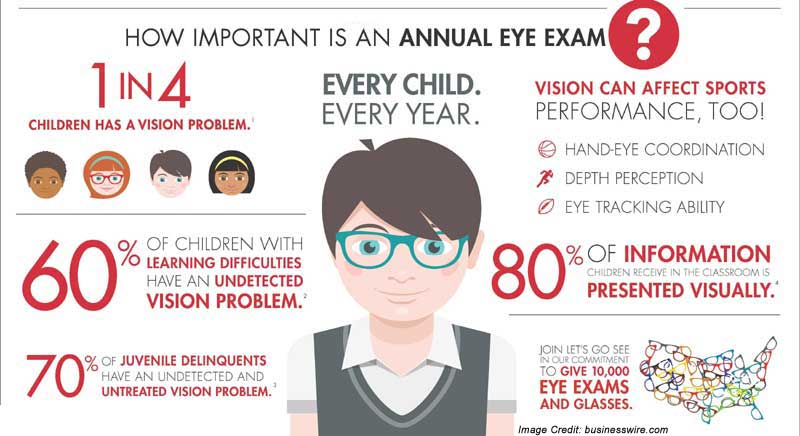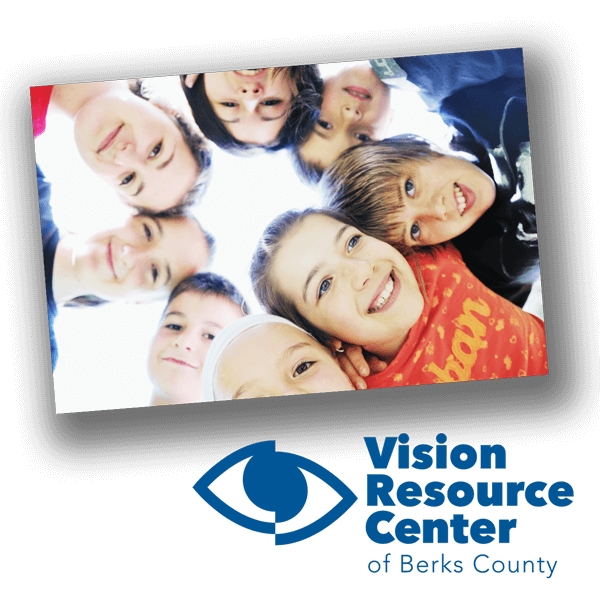August is Children’s Eye Health and Safety Month
Story Credit: Consumer Health Digest
August is dedicated to preventing eye injuries and vision loss and saving children’s eyesight. One of 20 children ages 3 to 5 has a vision problem that could result in permanent vision if left untreated. Despite this unsettling statistics, 80 percent of preschoolers do not receive an eye screening. Children’s Eye Health and Safety Awareness Month encourages parents to learn how to protect their child’s eyesight and save their child’s eyesight from vision threatening conditions through regular eye exams, hence early detection and proper treatment. According to Craig Hensle, MD, President of the Virginia Society of Ophthalmology, eye exams for children are important because vision changes can occur without you or your child noticing.
Purpose of Children’s Eye Health and Safety Awareness Month
Parents should make their child’s vision health a priority, which is why the main objectives of Children’s Eye Health and Safety Awareness Month are to:
- Spread Information On The Importance Of Healthy Vision – Many activities gear towards family-friendly resources that help parents take care of their child’s eye sight and keep it healthy.
- Know More About Early Detection Of Vision Problems In Children – Impart the red flags that a child may have a vision problem, such as uneven focus, amblyopia (lazy eye) and strabismus (crossed eyes). Early detection of vision conditions is crucial. Lazy eye is often corrected if treatment started at an early age; however, successful treatment is rarely achieved if treatment has started after a child reaches 8 or 9 years old.
- Raise Awareness About Preventing Eye Injuries In Children – In addition to eye diseases and conditions, you can also protect your children from sports-related eye injuries. About 100,000 sports-related eye injuries happen every day, where in one-third of these injuries occur in children under age 16. 90% could have been avoided if the child had worn protective eyewear, such as polycarbonate lenses fitted by an eye care professional. These lenses can withstand a ball traveling 90mph as it is 20 times stronger than ordinary eyeglasses.
- Save Children’s Eyesight – Teach parents to help their child correct their vision and recover from vision loss.
What You can do on Children’s Eye Health and Safety Awareness Month?
Having a month dedicated to knowing about your child’s eye health and safety can make a big difference to your child’s health and life. Based on the key objectives of this awareness month, you can do so much more to help raise awareness about vision diseases and eye conditions in children, as well as how to prevent them. To do a quick involvement, you can do your own research online and use the social media to share good and factual information to others. You can also support eye health and safety education program and sight-saving programs, which are designed specifically for children.
Message on Children’s Eye Health and Safety Awareness Month

Children should have an eye exam at 6 months and this must be repeated at age 3. Once they start school, eye exams must be done regularly. About 80% of what children learn in school is taught visually, which means if a child has undetected and uncorrected vision problem, it will affect the child’s development and performances in school. Some warning signs that your child may be experiences vision problems are:
- Tilting the head or squinting to see the class board better or when watching TV
- Frequent eye rubbing when he’s trying to concentrate on something.
- Holding a book too close to his eyes or often sitting close to the TV.
- Consistently using his fingers to guide his eyes when reading.
- Closing one eye to read or watch TV.
- Excessive tearing without any tear-causing stimuli.
- Eye discomfort when using a computer or any digital device i.e digital eye strain.
- Sensitivity to light, which sometimes accompanied by headache or nausea.
- Wandering eyes.
Special Tips on Children’s Eye Health and Safety Awareness Month
Aside from keeping a watchful eye for some of the warning signs listed above, protect your child from eye injuries by ensuring your children’s toys are age-appropriate and not a danger to their eyes. Check if your child’s toys or stuff are free of sharp or protruding parts that could accidentally poke the eyes. Fireworks are also detrimental to your child’s safety, as it can cause blindness if not handled correctly.
Conclusion
It’s your responsibility as a parent to know how you can keep your child’s vision healthy and obtain early diagnosis in case your child is suffering from vision problems through a regular eye exam. Also, be aware that eye injuries can happen anytime, anywhere. Eye injuries are often caused by sports or physical activities, so know proper precautions such as wearing protective eyewear when playing sports.
About Consumer Health Digest: Consumer Health Digest presents health related content to individuals looking to improve their overall health and well-being. All of the content appearing on Consumer Health Digest’s website is produced, selected, and reviewed by health writers and editors. Consumer Health Digest focuses on providing valuable health information and savings on health-related products for better managing your health.

